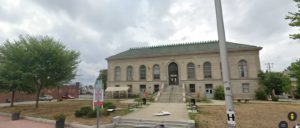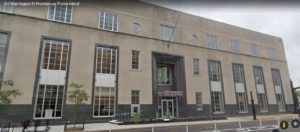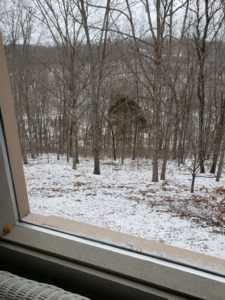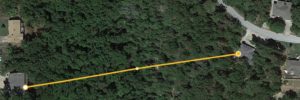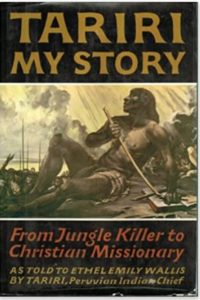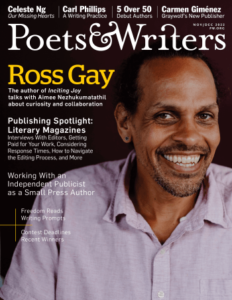
The first company I worked for had several libraries, one for each of the major divisions. But the main library was in the main building, Building A, on Meadowlake Parkway in Kansas City. I discovered this when I was working in Building N (or was it Q?) in Roeland Park, Kansas.
I had to go the 10 miles to Building A a couple of times a week to deliver a deck of punch cards to the main computer room, where they fed it into a modem to have the program run at McDonald Douglas in St. Louis. Don’t laugh, folks. This was 1975-76. Sometimes I would go, drop the cards off, and get the results the next day in the interoffice mail. Sometimes I was supposed to wait for the results. On those times, with nothing to do, I found the library and browsed in it.
This led to what I call two of my “career moments”, those times when you do something so spectacular that you remember it for the rest of your career and even after. At the time, I was with a group that was doing the structural design of 230 kV lattice steel transmission towers for the Eastern Province of Saudi Arabia. A few years later, I would be in Saudi and get to see those towers on the ground.
We were designing the towners using what we thought was a very good computer program, and none of us knew a whole lot about it. In the library, I found shelves full of journals of the American Society of Civil Engineers. One of those was the Power journal—many years of it—dealing with all things a civil engineer does for the electrical system. I found several articles about transmission towers. Needless to say, this was interesting reading.
In one issue, I found an article comparing the six or eight major transmission tower design computer programs (the analysis done by an unbiased party). The one we were using, the BPA program, was ranked second. The one that was first was proprietary, available only to the company that created it. My boss was about ready to head to Japan to a meeting about the Eastern Province project. I showed him the issue and article, and he took it with him and read it on the plane. In his meetings, someone criticized our program, saying it was not the best. My boss, fortified by the article and with the issue in hand, said, “Well, the ASCE Journal of Power Engineering says it’s the best program available. Look at this.” He won the argument and I was a hero. Career moment #1.
In another of those issues was an article on the general methodology of structural design of those towers. That led me to check out the manual on the BPA program and I learned it was a whole suite of programs. We were using the Design program, but after that we were supposed to go another step and do a more detailed analysis with the Analysis program. Based on what I learned, we started using it.
I learned this while a full-scale model of one of our towers was being tested in Japan, and we had a man there watching it. We worked late into the night and discovered that tower was 3% overstressed in one structural member. We quickly made a change, reran the analysis program, and had our fix, and waited for our man to make a pre-arranged call (no cell phones back then).
That morning, our man in Japan called and said that the tower being tested had failed at 97% of full load. We gave him the fix and were able waive the re-test, saving thousands or tens of thousands of dollars. Career moment #2 was in the books.
My next corporate library experience: While in Saudi Arabia, I discovered an Aramco library in Dhahran, where I frequently had to go for meetings. Perhaps it was more of a privately run public-type of library, but I’m calling it a corporate library. Whenever I had a half hour to kill between meetings, I would go there and browse. My main find was an atlas of the universe. I don’ remember the exact name. This had more than star charts. It talked about all things stellar and galactic. I learned about stars and galaxies near and far, and clusters of galaxies. I learned what a parsec was and how it was used to measure distances in the galaxies.
This gave me a fascination with space travel. I have several books queued up about that. Not sure when, if ever, I’ll get to write them.
Alas, my last couple of memories about corporate libraries aren’t good. When CEI moved into our new building in 2000, we had a great library. The then-director of training and his assistant did a wonderful job of organizing and labeling everything. And we even had a digital card catalog. This worked great from move-in day to around early 2005. A re-organization caused the library to move to less prominent quarters in our building. Things didn’t get put on the shelf the digital card catalog said they were on. This was not a downsizing but rather a reduction in usefulness at the start of the search engine era.
The downsizing came in 2009. After three or four layoffs, we were giving up our beautiful building and moving into rented offices. The library would move, but would be reduced in size. I was assigned the task of deciding what to keep, what to throw away. First, I had to organize it, which resulted in finding many duplicates of manufacturer’s catalogs and many we didn’t need. Things such as old phone books, old municipal standards, etc. all had to go. It was hard, but I made the cuts, and the truncated library barely fit in its new shelves.
That wasn’t the worst. As the Information Era came on full blast, and as we had a little growth, around 2012 the library lost much of its usefulness. It had to be shrunk even more, to maybe 125 linear feet of shelf space in a conference room. Again I had to make those hard decisions. Then, around 2016 the company decided to get rid of it all together. I took some of it into my office, got other people to take things, and got rid of everything else. Those were hard decisions to make, and hard to see valuable books and references overflowing in our dumpster.
I’ve wondered what my first company did with that library in Building A. The thought of all those journals being discarded isn’t a pleasant one. Maybe they found a way to keep it. I hope so.
